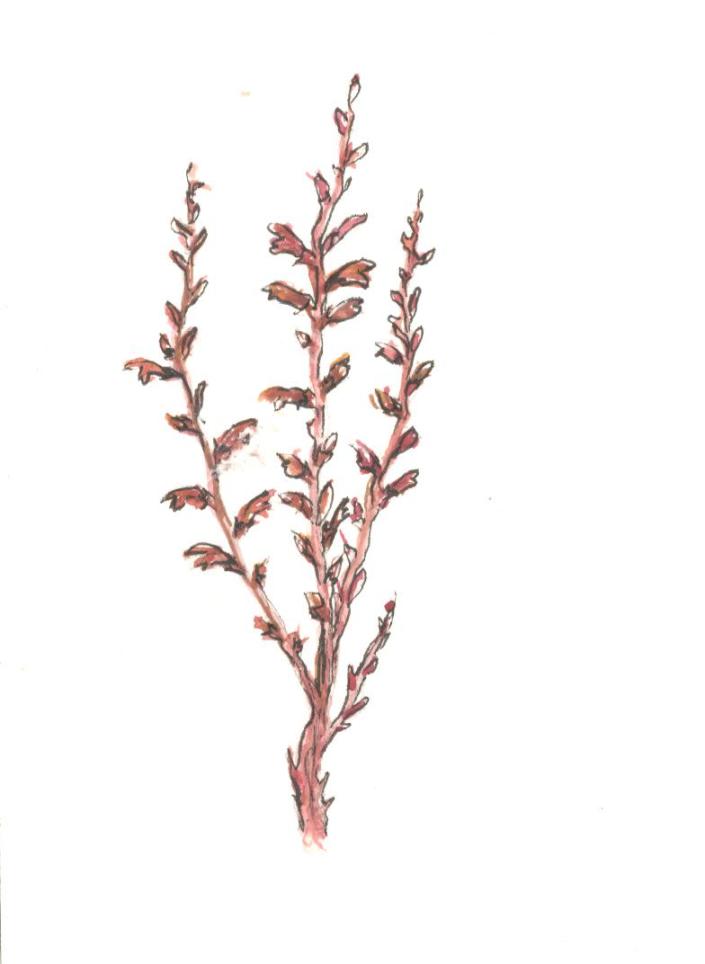[ad_1]

The strategies devised by plants are astonishing. What, for instance, do the following plants have in common: dodder (love vine), mistletoe, squawroot, beechdrops, pinesaps, gerardia, one-flowered cancerroot, false foxglove and Indian paintbrush?
Answer: All are parasitic on the nutrient systems of other plants.
The word “parasite” derives from the Greek word meaning “to eat at another’s table.”
A plant is parasitic when it derives all or part of its food from a host that it invades.
Many parasites penetrate the host plant’s tissues with a special structure called a “haustorium.” If you unwind a dodder vine from its host you can easily observe these structures, which resemble blunt hypodermic needles.
Some parasitic plants prey on a range of host plants. Mistletoe can be observed on the branches and trunks of various trees. Indian paintbrush grows in open areas where it can invade the root systems of various grasses.
Nature Journal: Hawk moth can hover like a hummingbird
If a plant is “epiphytic,” it merely lives atop another plant to gain support and access to rainfall and sunlight. Mosses, lichens and ferns are good examples of epiphytes found here in the temperate zone, whereas in tropical rainforests many orchids and bromeliads are entirely epiphytic.
If a plant derives only a part of its nutrient requirements from a host plant, it is described as a “hemi-parasite.” Mistletoe, for instance, obtains water and mineral ions from its host, but produces carbohydrate nutrients through the photosynthetic activity of its own prolific green leaves. Still other parasites form complicated “mycorrhizal” associations that involve the host plant and intermediary fungal agents in the soil, as is the instance with pink and yellow lady’s-slippers.
Some parasitic plants are “species specific” — that is, they will grow only on a single species of host plant. False foxglove, for instance, feeds only upon the root systems of oak trees.
Nature Journal: Mushrooms and toadstools – make sure you pick the right one
One of the most interesting species-specific plants found here in the Southern mountains is beechdrops (Epifagus virginiana), which start to flower about this time of year. If you have a stand of beech trees on your property, there’s every chance you can locate beechdrops growing underneath them right now.
Look for a drab, low-growing (6-18 inches high) plant with numerous brownish-tan stems and magenta-colored flowers. Blooming from August into October, these flowers are delicately marked but can be full appreciated only when viewed through a hand lens.
Note that the upper flowers on each branch open in order to attract insects for cross-pollination. The lower flowers remain closed. These are “cleistogamous” flowers that are self-pollinated, just in case the ideal cross-pollination plan doesn’t work out.
This column originally was published Aug. 18, 2021.

George Ellison is an award-winning naturalist and writer. His wife, Elizabeth Ellison, is a painter and illustrator who has a gallery studio at 155 Main St., Bryson City. Contact them at [email protected] or [email protected] or write to 3880 Balltown Road, Bryson City, NC 28713.
This article originally appeared on Asheville Citizen Times: Nature Journal: Beauty of nature may also be parasitic
[ad_2]
Source link











